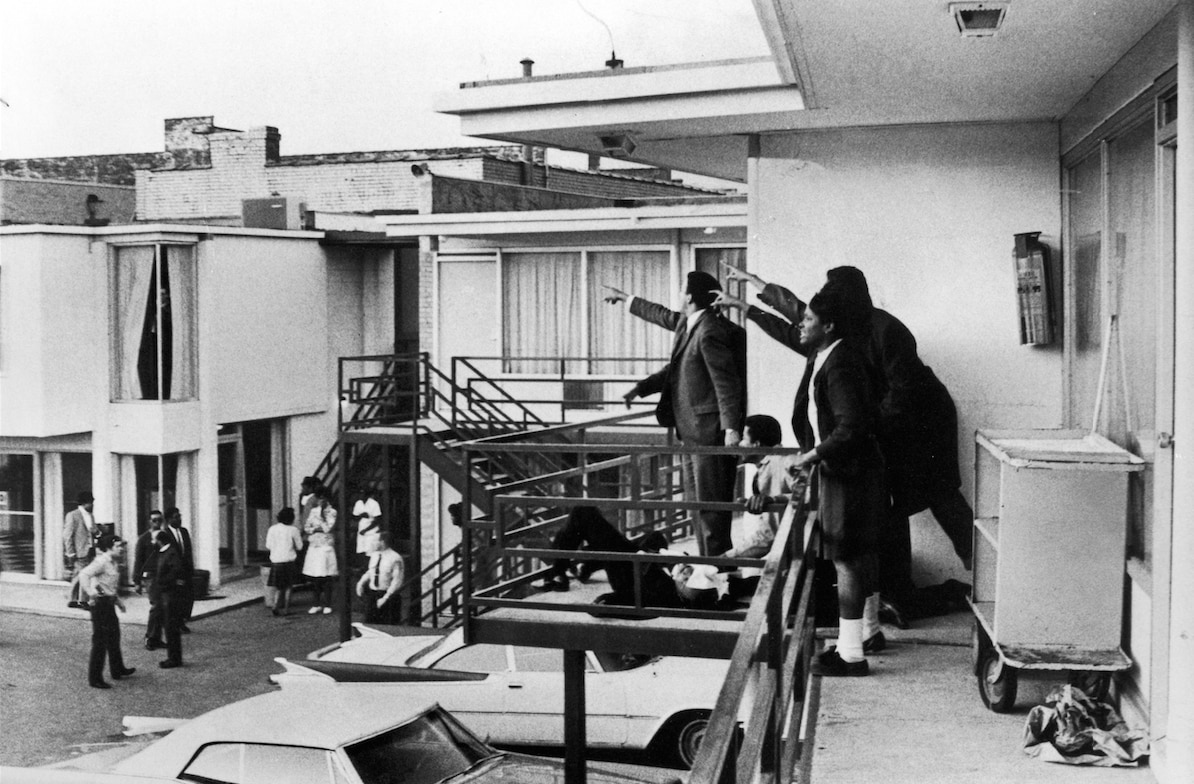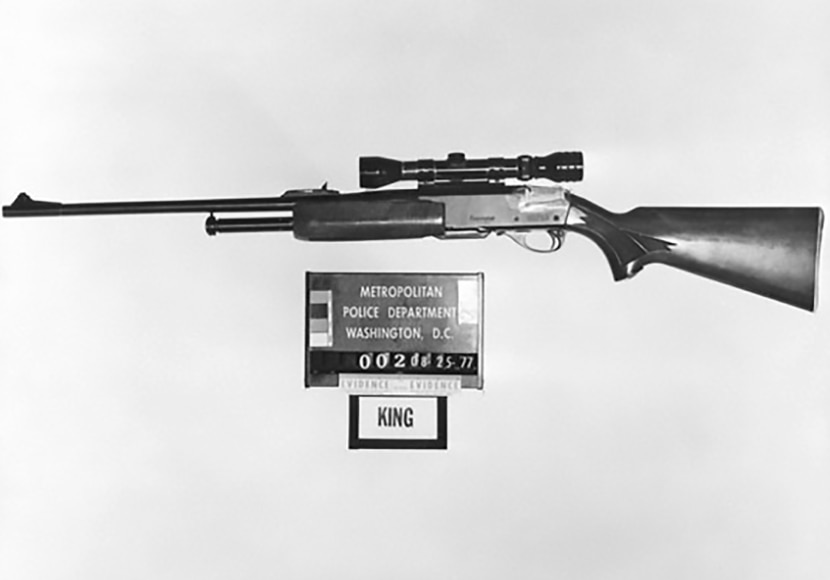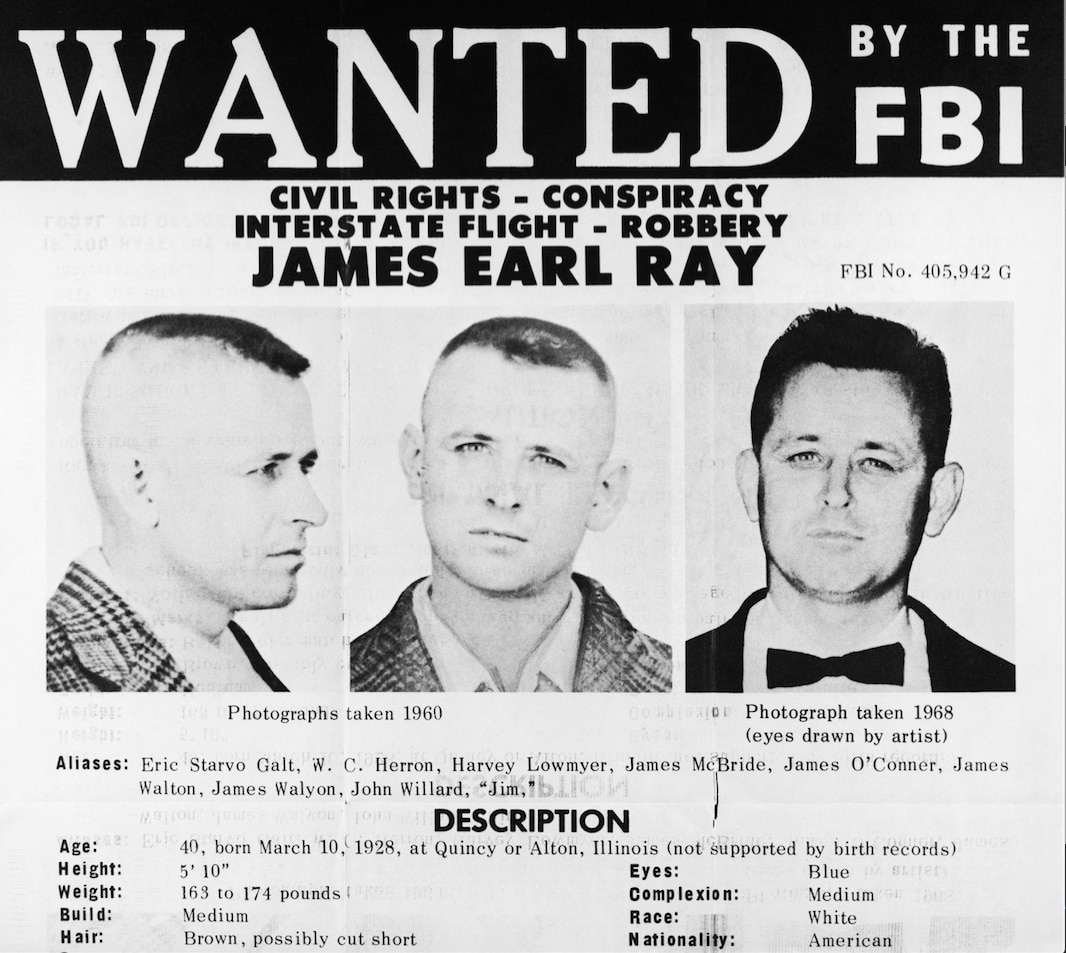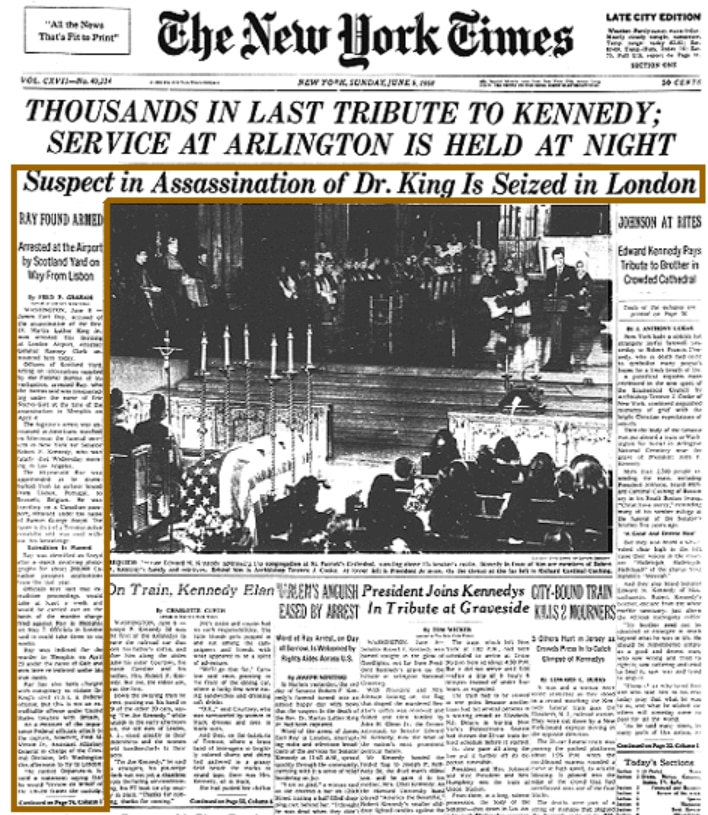Create a free profile to get unlimited access to exclusive videos, breaking news, sweepstakes, and more!
Martin Luther King's Assassination: Behind The Global Manhunt For James Earl Ray
The Rev. Dr. Martin Luther King Jr. was struck down by an assaassin 50 years ago Wednesday.

The Rev. Dr. Martin Luther King Jr. was struck down by an assaassin 50 years ago Wednesday, with a single bullet killing the civil rights leader and icon.
But it would take months — and a massive manhunt — before King's killer was finally caught.
“I would say it’s probably one of the largest criminal investigations in the history of the bureau, no question,” former FBI agent Ray Batvinis, who worked in the bureau in 1968, told ABC News. In all, the FBI would examine thousands of fingerprints, chase down hundreds of leads, and uncover 17 different aliases before they would ultimately apprehend James Early Ray halfway around the world in London.
Ray had already spent 14 years behind bars by the time he shot King in Memphis. Convicted of fraud and burglary, he made a daring escape from a Missouri state penitentiary in 1967 and, after fleeing to Mexico, was lured back to the American South by the segregationist presidential campaign of Alabama Gov. George Wallace. Consumed by hate for African-Americans, Ray had stalked King for several weeks prior to the shooting.
On April 3, 1968, he rented a room in a board house that had a rear bathroom window with an unobstructed view of the Lorraine Motel, where King and other civil rights leaders had previously stayed while protesting with Memphis sanitation workers. As King stood on the motel balcony the following evening, Ray, standing inside the bathroom’s tub, leaned out the window and fired the fatal shot from a Remington .30-06 rifle.

The first big break in the case came from Ray himself, who dropped the murder weapon on the sidewalk near the scene of the crime as he fled. According to the House Select Committee’s official assassination report, in the National Archives, the FBI spent 257 man-hours and conducted 81 comparisons as part of its ballistics tests to confirm the rifle was the murder weapon. Although the tests could not definitively conclude that rifle was used to kill King, the bureau nonetheless began a massive search for its owner, who had left his fingerprints all over the weapon.
The FBI finally identified Ray after linking him to two different aliases used in the lead-up to the crime. Ray had used the fake name Harvey Lowmeyer to purchase the rifle,and he bought the white Ford Mustang seen fleeing the scene using the alias Eric Galt. Based on this information, on April 20, the FBI put Ray on its “Ten Most Wanted Fugitives” list.

By that time, however, Ray had already escaped to Canada. After shooting King, Ray had driven to Atlanta, where he ditched his white Mustang. He immediately took a bus to Detroit and then crossed the border in a taxi. He subsequently spent several weeks in Toronto and stole a man’s identity to obtain a real Canadian passport, which he used to travel to London May 6. Ray traveled to Lisbon, Portugal the next day, with the ultimate goal of making his way to South Africa or Rhodesia, where he thought he would be hailed as a hero by their white nationalist governments.
Unable to obtain passage to Africa, Ray returned to England and soon became desperate. After conducting two botched robberies, Ray tried to fly to Belgium a month later, but was detained at London’s Heathrow Airport on June 8. A customs official had noticed he was carrying two passports and that Ray’s assumed identity matched a name suspected of the two robberies that was on a British watch list. Officials from Scotland Yard uncovered Ray’s true identity during a subsequent interview.
It took more than two months for Ray to finally be caught. News of Ray’s capture overseas shared headlines with the funeral of Massachusetts senator and presidential hopeful Robert F. Kennedy, who himself had been assassinated just two days prior.

Though the FBI—and its director, J. Edgar Hoover, in particular—had hounded and spied on King for years prior to his death, the bureau expended enormous effort to catch his assassin. Hoover told the New York Times that the manhunt to apprehend Ray had spread to all 50 states as well as several countries. To highlight the high-profile nature of the case, the Justice Department took the unusual step of sending the Criminal Division’s Assistant Attorney General to escort Ray back to the United States.
On March 10, 1969, Ray’s 41st birthday, he confessed to the murder and was sentenced to 99 years in prison. Soon after, however, he recanted his confession, claiming he was merely a patsy in a larger plot to kill King and that a mysterious figure named “Raoul” had actually pulled the trigger. His account has since spawned numerous conspiracy theories, but both a Justice Department investigation and a Congressional assassination probe examined Ray’s new story in great detail and concluded it was not credible.
Ray died in a hospital prison in Nashville, Tennessee on April 23, 1998.
[Photos: Joseph Louw/The LIFE Images Collection/Getty Images; National Archives; New York Times]


